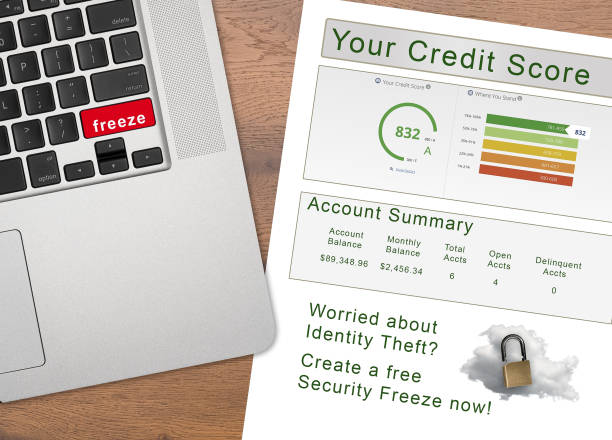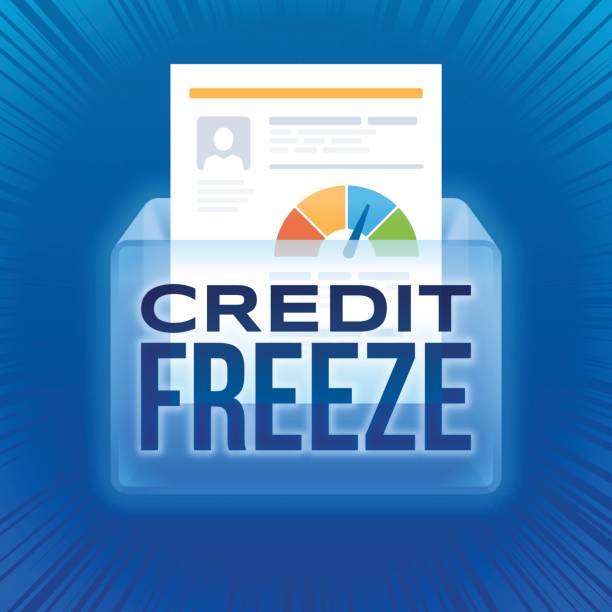
Safeguarding Your Financial Information with Equifax Credit Freeze
In today’s increasingly digitized world, where transactions are processed at the click of a button and information is exchanged at the speed of light, the importance of securing personal data cannot be overstated. Financial data, especially, needs robust security measures given its sensitivity and potential implications if misused. One of the key ways to protect your personal financial details is by implementing a credit freeze on your credit report with Equifax. This article seeks to delve into the concept of a credit freeze, its operation, and the step-by-step process of setting up a credit freeze with Equifax.
Key Takeaways
- Credit Freeze Functionality: A credit freeze with Equifax restricts access to your credit report, making it challenging for identity thieves to open new accounts or obtain credit in your name, serving as a deterrent against unauthorized credit access and identity theft.
- Equifax’s Role: As one of the three major credit reporting agencies in the U.S., Equifax holds extensive financial data, including credit history and personal identification information. Freezing your credit with Equifax is a vital step in protecting your financial information from unauthorized access.
- Activation Process: To initiate a credit freeze with Equifax, you need to gather personal information, navigate to Equifax’s website, confirm your identity through a verification process, and then activate the freeze, which may involve a fee depending on your state.
- Management and Additional Measures: After setting up a credit freeze, it’s important to manage your unique PIN for future adjustments to the freeze. Additionally, regular credit monitoring and freezes with other credit agencies like Experian and TransUnion are recommended for comprehensive protection.
Delving Deeper into the Credit Freeze Concept
A credit freeze, also known as a security freeze, serves as a powerful tool for individuals aiming to safeguard their credit information. It offers a way to restrict access to credit reports, thereby making it difficult for identity thieves to open new accounts or get credit in your name without your knowledge. Once a credit freeze has been activated, prospective creditors or lenders are unable to access your credit report unless you provide your explicit permission. This proactive step can act as a strong deterrent for identity theft and unauthorized credit access.
Unpacking the Importance of an Equifax Credit Freeze

Equifax sits at the table with Experian and TransUnion as one of the three leading credit reporting agencies in the United States. These organizations gather and manage a comprehensive array of financial data about individuals, encompassing credit history, details about loans, and personal identification information. By choosing to establish a credit freeze specifically with Equifax, you are taking a crucial step towards enhancing your defense against unauthorized access to your credit report.
Step-by-Step Guide to Implement a Credit Freeze with Equifax
- Collate the Required Information: Before setting a credit freeze into motion, it’s crucial that you have all the necessary information readily available. This could include your social security number, date of birth, current and previous addresses, and any other relevant personal identification information.
- Navigate to the Equifax Website: Using your preferred search engine, type in “Equifax” and select the official link that appears in the search results. It’s important to ensure that you’re on the authentic Equifax website to avoid falling prey to potential scams or phishing attempts.
- Go to the Credit Freeze Section: Once you’ve landed on the Equifax website, navigate to the area specifically dedicated to credit freezes. This section might be titled “Credit Freeze,” “Security Freeze,” or something along those lines.
- Verify Your Identity: To proceed with the credit freeze process, Equifax will require you to verify your identity. This might involve answering a series of security questions based on your personal information. Make sure to answer these questions accurately to successfully confirm your identity.
- Activate the Credit Freeze: Once your identity has been confirmed, you can activate the credit freeze by following the instructions provided on the Equifax website. This typically involves filling out an online form or getting in touch with Equifax directly to request a credit freeze.
- Pay the Applicable Fee: Depending on the state you live in, Equifax may charge a fee to activate a credit freeze. It’s important to review and understand all associated fees before proceeding. Certain individuals, like victims of identity theft, may qualify for a free credit freeze in some states.
Last step
Keep an Eye on Your Credit Freeze: After activating the credit freeze, Equifax will provide you with a unique Personal Identification Number (PIN). You’ll need this PIN if you decide to temporarily lift or remove the credit freeze in the future. Make sure to keep this PIN safe and confidential.
Additional Points to Keep in Mind and Recommendations
- Credit Thaw: If you find yourself needing to apply for credit or a loan in the future. You may have to temporarily lift the credit freeze. This can be done by getting in touch with Equifax. And providing your PIN to authorize the temporary removal of the freeze.
- Credit Monitoring: While a credit freeze offers substantial protection against unauthorized access. It’s still important to regularly monitor your credit reports for any unusual activity. Consider subscribing to credit monitoring services to stay vigilant and receive alerts about any potential changes or inquiries.
- Other Credit Reporting Agencies: Remember, implementing a credit freeze with Equifax only affects your Equifax credit report. For maximum protection, it’s recommended that you also activate credit freezes with Experian and TransUnion.
- Duration of Credit Freeze: In most states, a credit freeze stays in effect. Until you choose to lift or remove it. However, some states have specific time limits for credit freezes. Make sure you’re familiar with the rules in your state so you understand how long a credit freeze lasts.
In conclusion, an Equifax credit freeze offers an effective way to protect your personal and financial data. Reducing the risk of identity theft and unauthorized credit access. By following the steps outlined in this article, you can activate a freeze with Equifax. And enjoy the peace of mind that comes with knowing your credit report is secure. Don’t forget to regularly monitor your credit reports, consider freezing your credit with other agencies. And take an active role in protecting your financial health.
FAQs
Lift your Equifax credit freeze online through myEquifax or by calling (888) 298-0045, where you’ll verify your identity
Contact each bureau (Equifax, Experian, TransUnion) individually online or by phone to freeze your credit. Providing personal details for identity verification
Manage your credit freeze with Equifax either online through myEquifax or by phone, verifying your identity to lift the freeze.
Mail a completed freeze request form to Equifax Information Services LLC, P.O. Box 105788, Atlanta, GA 30348-5788, including identity and address verification documents